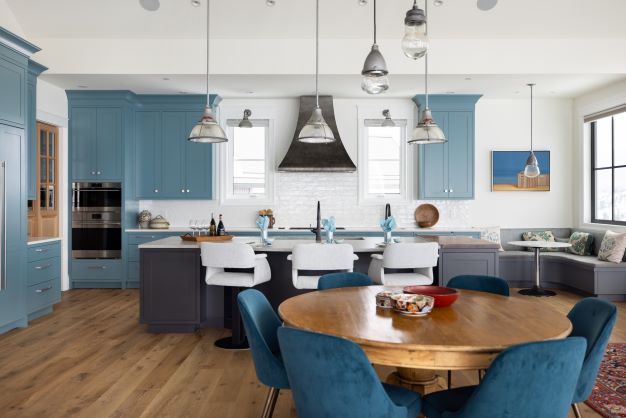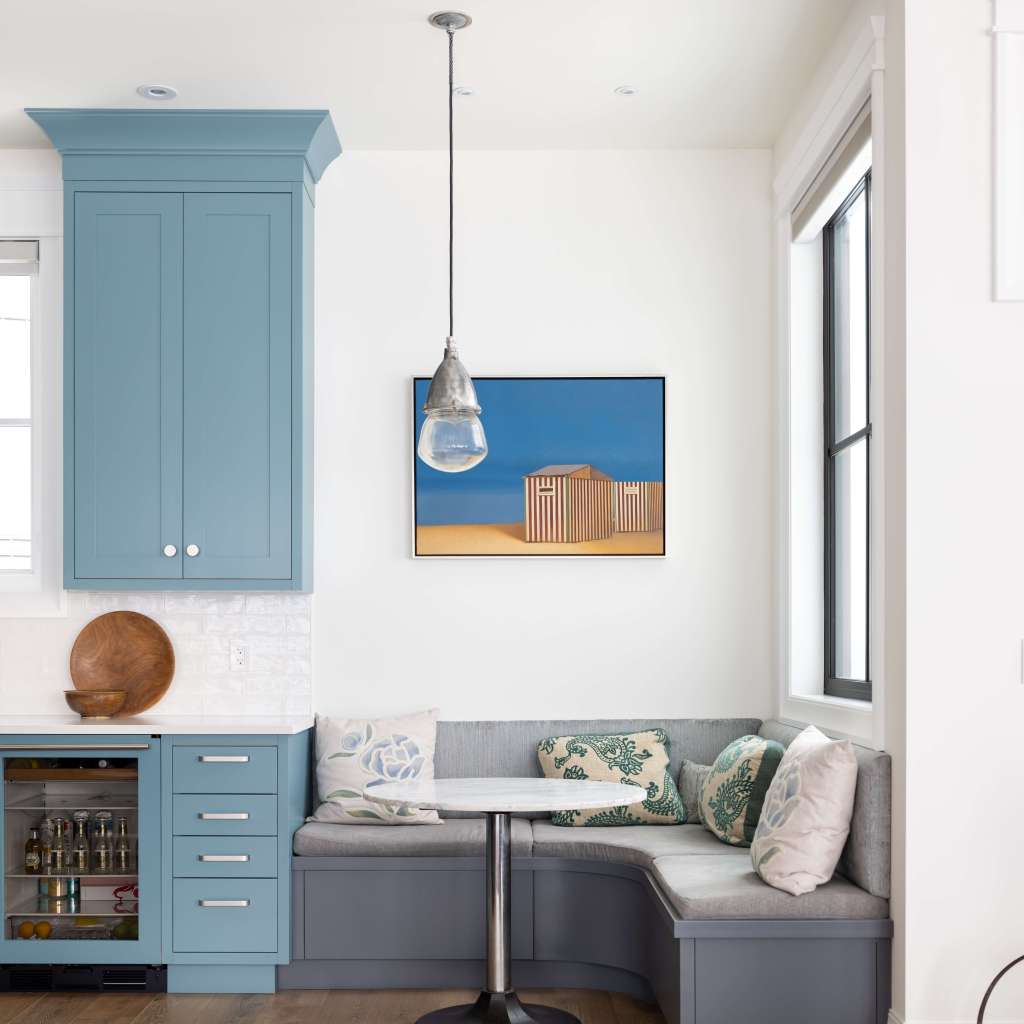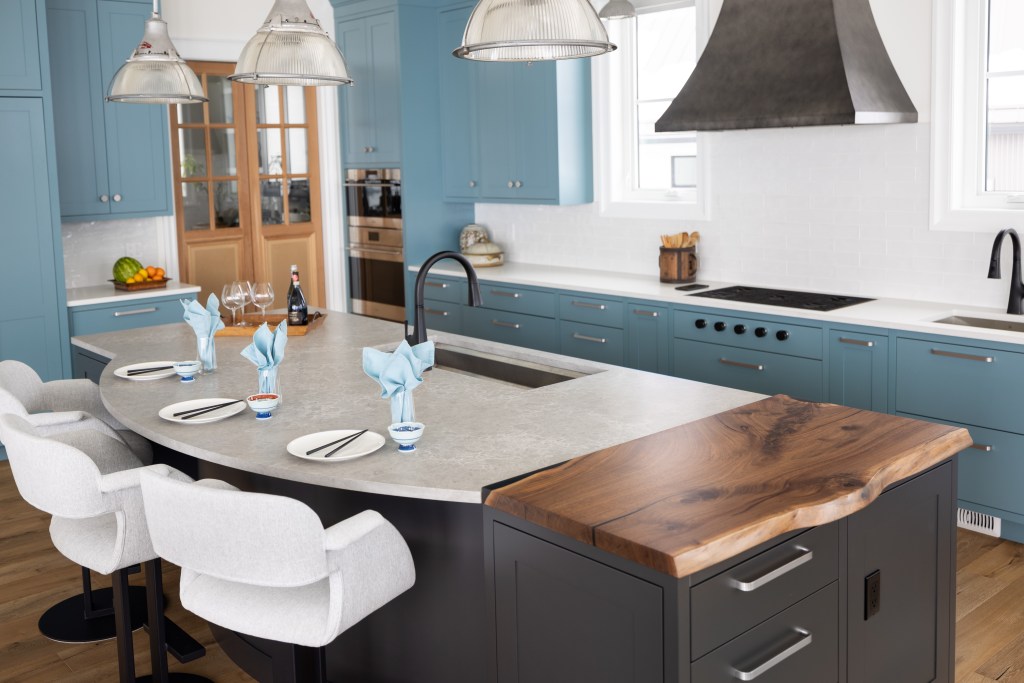The kitchen is often described as the heart of the home, a place where families gather to share meals, conversations, and experiences.
But beyond its practical purpose as a space for cooking and eating, the design of a kitchen can significantly impact your client’s mental and emotional well-being.
The psychology of kitchen design delves into the ways in which the layout, aesthetics, and functionality of a kitchen can influence your client’s mood, behavior, and overall sense of well-being.
In this VESTA Blog, we will explore the fascinating world of kitchen design psychology and how it can enhance your client’s quality of life.
Understanding Kitchen Design Psychology
The concept of kitchen design psychology is rooted in the idea that our environment plays a significant role in shaping our thoughts, emotions, and behavior.
It draws from various psychological principles and design philosophies to create kitchens that are not only functional but also promote mental and emotional wellness.
Let’s delve into some of the key aspects of kitchen design psychology and its impact on well-being.
1. Color Psychology





Color is one of the most powerful elements in design, and it has a profound influence on our emotions and behaviors.
Different colors can evoke different feelings, and the choice of colors in a kitchen can set the tone for the space.
Blue
Blue is associated with calmness and tranquility. It can create a serene atmosphere in a kitchen, making it an excellent choice for those who want to unwind and relax while cooking or dining.
Green
Green is often linked to nature and health. It can make a kitchen feel fresh and invigorating, promoting a sense of well-being and connection to the environment.
Red
Red is an energetic and stimulating color. While it can add vibrancy to a kitchen, it’s essential to use it sparingly as it can be overwhelming if overused.
Yellow
Yellow is associated with happiness and positivity. It can bring warmth and cheerfulness to a kitchen, making it a pleasant space for social interactions.
Neutral Tones
Neutral colors like white, beige, and gray can create a timeless and versatile kitchen design. They offer a clean, uncluttered look that can be soothing and welcoming.
2. Natural Light & Well-Being



The presence of natural light in a kitchen can have a profound impact on client’s well-being.
Exposure to natural light is known to boost mood, increase productivity, and regulate our circadian rhythms.
When designing a kitchen with well-being in mind, consider the following:
Maximizing Natural Light
Design your client’s kitchen layout to incorporate as much natural light as possible. Large windows, skylights, and strategically placed mirrors can help reflect and amplify daylight.
Indoor-Outdoor Connection
If possible, create a seamless transition between the kitchen and outdoor spaces, such as a patio or garden. This connection to nature can enhance the sense of well-being.
Lighting Control
Install lighting fixtures that offer control over the intensity and color temperature of the light. You can adjust the lighting to match different activities and moods throughout the day.
3. Biophilic Design





Biophilic design is an approach that integrates natural elements and patterns into the built environment to enhance well-being.
In a kitchen, biophilic design can involve incorporating organic materials, plants, and textures that mimic nature.
Here are some ways to apply biophilic design principles to your kitchen spaces:
Use Natural Materials
Incorporate wood, stone, and other natural materials into your kitchen designs. These materials can create a sense of warmth and connection to the natural world.
Indoor Plants
Adding potted plants or a small herb garden to a kitchen design not only brings a touch of greenery but also contributes to improved air quality.
Natural Patterns
Consider using patterns in your kitchen designs that mimic natural elements like waves, branches, or leaves. These patterns can evoke feelings of serenity and harmony.
4. Organization






The organization of a kitchen can have a significant impact on well-being. A cluttered and disorganized kitchen can lead to stress and anxiety, while an organized and efficient kitchen can promote a sense of calm and control.
Storage Solutions
Specify smart storage solutions in all your kitchen designs. Include pull-out shelves, deep drawers, and cabinet accessories to make it easier for your clients to keep everything in its place in their finished kitchen
Minimalist Design
In some cases you may want to embrace a minimalist design philosophy with a focus on simplicity and functionality. A minimalist kitchen design reduces visual noise and promotes a sense of order.
5. Social & Family Connection





Kitchens are often gathering places for families and friends, and the design can either facilitate or hinder social connections. A well-designed kitchen encourages social interactions and strengthens relationships.
Open-Concept Layout
An open-concept kitchen that flows into the living or dining area promotes connectivity. It allows people to engage in conversations while cooking or enjoying a meal.
Seating Arrangement
Ensure that there is adequate seating in or near the kitchen for family and guests. A kitchen island with bar stools or a cozy breakfast nook can encourage socializing.
Multifunctional Space
Design your kitchens to serve multiple functions beyond cooking and dining. Consider areas for homework, work-from-home setups, or a place for kids to do crafts to meet your client’s needs.
6. Kitchen Flow & Efficiency





The layout and functionality of a kitchen can affect your client’s mood and well-being through its efficiency and ease of use. A well-designed kitchen optimizes flow and minimizes stress.
Work Triangle
Consider the classic kitchen work triangle, which connects the stove, sink, and refrigerator in a triangle shape. This layout ensures good food flow during meal preparation.
Ergonomics
Implement ergonomic design principles to reduce physical strain and make kitchen tasks more comfortable and efficient.
Traffic Flow
Ensure that there is enough space for movement within the kitchen, avoiding congestion and allowing for smooth transitions between different areas.
7. Personalization & Comfort





A kitchen that reflects your client’s personal style and preferences can have a positive impact on their well-being. Personalization and comfort go hand in hand in kitchen design psychology.
Personalized Decor
Your client’s personal decor style needs to be included in the final product specifications.
This is their kitchen not yours so respecting their personal taste is important.
Also have your clients decorate their kitchens with items that have sentimental value or reflect their personality. Personal touches can create a sense of belonging and comfort.
Comfortable Seating
Again, specify comfortable seating for your client’s kitchen, whether it’s at the dining table, breakfast nook, or kitchen island. Comfortable seating encourages relaxation and socialization.
Temperature Control
Ensure that your kitchen designs have proper temperature control. A kitchen that’s too hot or too cold can be uncomfortable and impact your client’s overall well-being.
Kitchen design psychology highlights the profound influence of our kitchen environments on our mental and emotional well-being.
By applying principles of color psychology, biophilic design, organization, and considering the impact of natural light, a kitchen can become a space that nurtures our sense of well-being.
Whether it’s the choice of colors that soothe or invigorate, the integration of natural elements that connect us to the environment, or the design of a social and efficient space, a well-thought-out kitchen design can positively impact our overall quality of life and make our home a happier and more harmonious place to be.
If you would like to receive more VESTA blogs like this in your inbox, subscribe here:

Jan Rutgers has been designing for over 25 years. Developing functional layouts for every area of the home is her passion. She has designed more than 1000 kitchens in her career, learning valuable skills with each one! Her experience in Kitchen Design, Millwork Manufacturing and Product Development has led her to create VESTABUL SCHOOL OF DESIGN where she educates and mentors people passionate about the Kitchen Design Industry.





